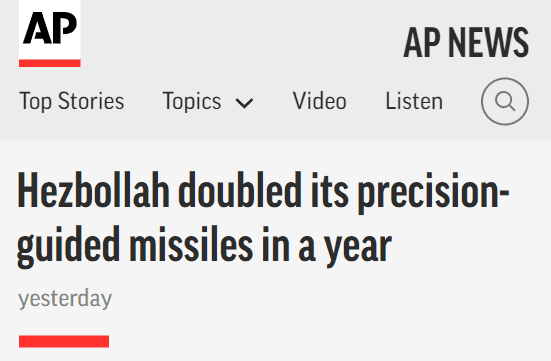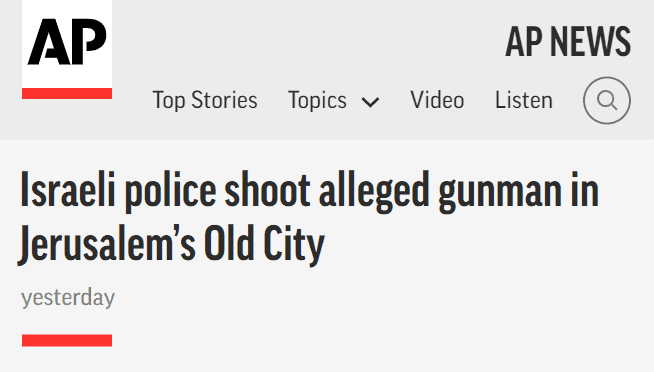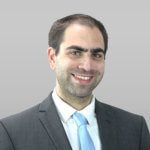When the leader of a US and EU-designated terrorist group makes a claim, journalists, perhaps more than anyone else, should know that the comments should not necessarily be taken at face value and that additional investigating is required.
But a recent piece by Associated Press parrots the words of Lebanon-based Hezbollah leader Hassan Nasrallah, effectively promoting them as fact.
Indeed, the headline of the December 27 article — “Hezbollah doubled its precision-guided missiles in a year” — is a direct quote from the head of the Iranian proxy, which through its nefarious actions has brought Lebanon to the brink of total collapse and whose members have killed countless innocents on behalf of the Assad regime in Syria, trained Iraqi insurgents who have gone on to kill US forces, and targeted Israel repeatedly.
Join the fight for Israel’s fair coverage in the news
In this respect, the headline should at the very least have included Nasrallah’s name or a reference to him in order make clear that the headline is not a statement of fact.

By contrast, an accurate title might have read, “Hezbollah chief: We have doubled our precision-guided missiles in a year;” or, “Nasrallah: Hezbollah doubled its precision-guided missiles in a year.”
The point is that what terrorists say must be taken with a grain of salt. And while the media should document these claims, journalists have a responsibility to ensure that the public understands the difference between a claim and objective truth.
It is telling, too, that the article is based entirely on a four-hour-long interview given by Nasrallah to the Beirut-based Arabic television station Al-Mayadeen.
Unfortunately, using just a single source is no longer an uncommon occurrence in today’s media landscape. But it is worthwhile noting a specific portion of this guide written by Craig Silverman and published in the Columbia Journalism Review:
Verification before dissemination — Our job is to apply the discipline of verification to everything we gather. That means checking what a source tells you before putting it out there. It means holding off on that hot bit of news to make an extra phone call or bit of checking before sending it out.”
The rule applies to all sources, and especially so when the information is being conveyed through what is widely considered a Hezbollah mouthpiece. Even internationally venerated NGOs that are often described as neutral should not be given a pass. Until verified, claims should be clearly described as such.
Moreover, surely an international news agency of AP’s standing and resources should at least get a counter-response from an Israeli source with knowledge of Hezbollah’s military capabilities?
Why is a terrorist leader trusted, but the Israeli Police and a video are not?
The concern ogrows when the article in question is juxtaposed against another Associated Press piece from a week ago. In that story, despite indisputable evidence that a shooting attack had occurred in Jerusalem, the headline referred to an “alleged gunman.”

Video footage of the perpetrator opening fire was widely circulated on social media and clear photographs of the gun and walls pockmarked with bullet holes were published by Israeli news sites.
Nevertheless, it appears that the AP‘s modus operandi is to cast doubt on Israeli authorities while quoting the leader of Hezbollah verbatim, words that then traversed the globe as they were picked up by other news outlets.
Featured image: Gabriele Pedrini via Shutterstock


